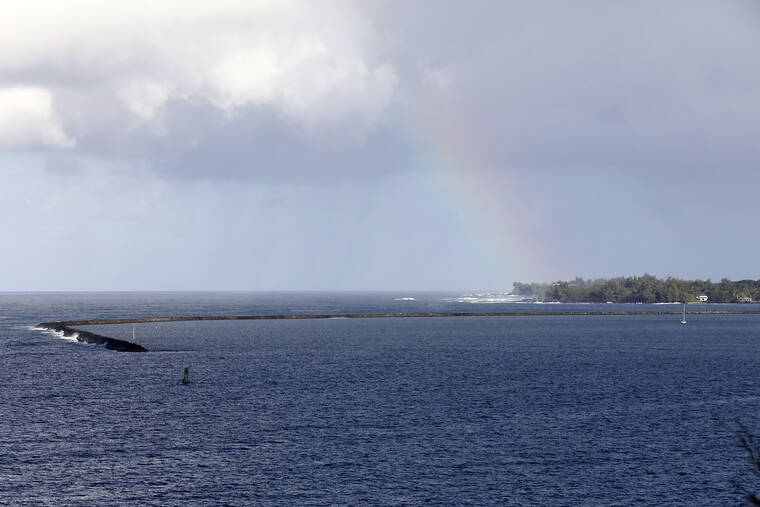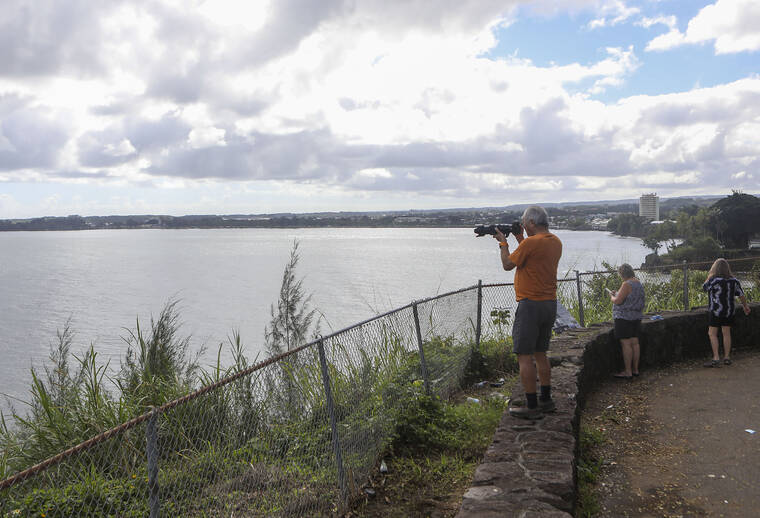A plan to improve Hilo Bay’s poor water quality could be forthcoming within three years.
Last week, the National Fish and Wildlife Foundation and the National Oceanic and Atmospheric Administration announced that they would award Hawaii County a $2 million grant to develop a watershed management plan for Hilo Bay. That grant will be accompanied by $464,300 in county funds.
The plan follows a recommendation by the U.S. Army Corps of Engineers, which earlier this year released a study of Hilo Bay and a series of a recommendations about how its water quality could be improved.
The priciest suggestions included heavy modifications to the Hilo Bay breakwater, but the Army Corps identified a comprehensive watershed plan as an option that would be less expensive but still potentially effective.
Hilo Councilwoman Jenn Kagiwada said the breakwater modifications — which could cost $50 million — might still be carried out in the future if the funding can be secured, but the management plan should bear results more quickly.
The county has three years to complete its plan, Kagiwada said, during which time dozens of local and state organizations will be consulted about their own perspectives on the watershed, conservation, indigenous science, the community, and more.
“It’s still a big project, so it’s nice we have three years to do it,” Kagiwada said. “After three years, we should have a completed plan, including ways to deal with the water quality.”
The water in the bay was found in 2009 to not meet state water quality standards. While there have been theories as to the causes — one is that the breakwater is trapping sediment from the Wailuku and Wailoa rivers, hence the recommendation for breakwater alterations — the plan will hopefully better identify the sources of the contamination, Kagiwada said.
Kagiwada said feral ungulates such as pigs also might be contributing to the poor water quality, as animal corpses wash down the river into the bay.
“We’re worried about Rapid Ohia Death, too,” said Cheyenne Perry, coordinator for the Maunakea Watershed Alliance, one of the organizations that will partner with the county to develop the watershed plan. “We’re starting to see the spread of ROD in the upper part of Wailuku River, and it could spread from there.”
Perry said his organization was involved in early meetings with the county during the grant application process, and will continue to share expertise relating to the upper watershed throughout the plan’s development.
Douglass Adams, director of the county’s Research and Development Department, said the process for creating the plan will include opportunities for public feedback, but added that a specific timeline of events in the development process depends on future information from the federal agencies awarding the funds.
Adams said “the time is right” for the plan.
“I know we’ve tried in the past,” Adams said. “I don’t know why we haven’t had a plan like this already, but I think the timing is right for this to finally happen.”
“We’re in a different time now,” Perry said. “Hilo has changed, and we have to know all the ways it’s changed.”
Email Michael Brestovansky at mbrestovansky@hawaiitribune-herald.com.




